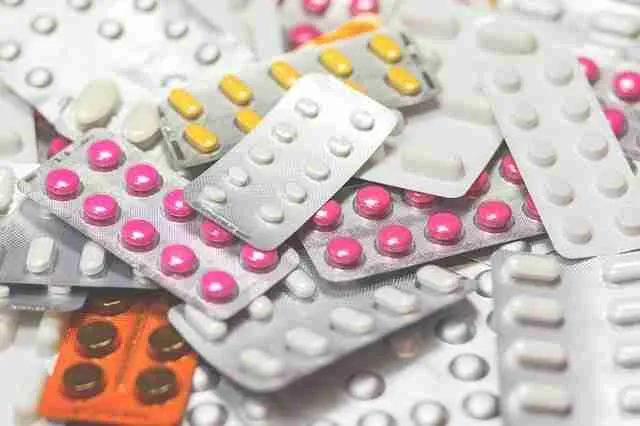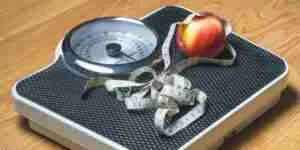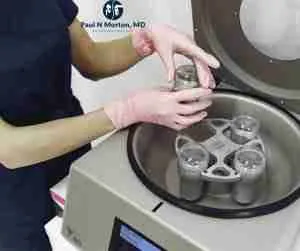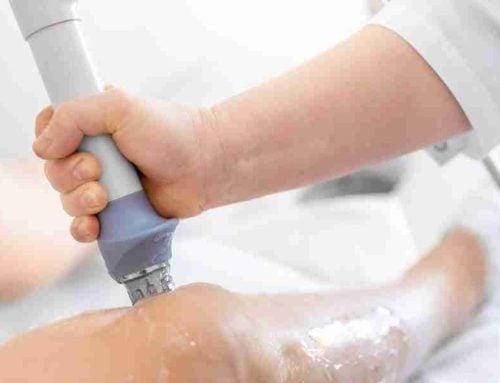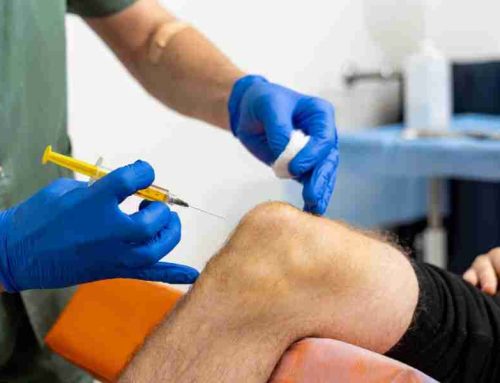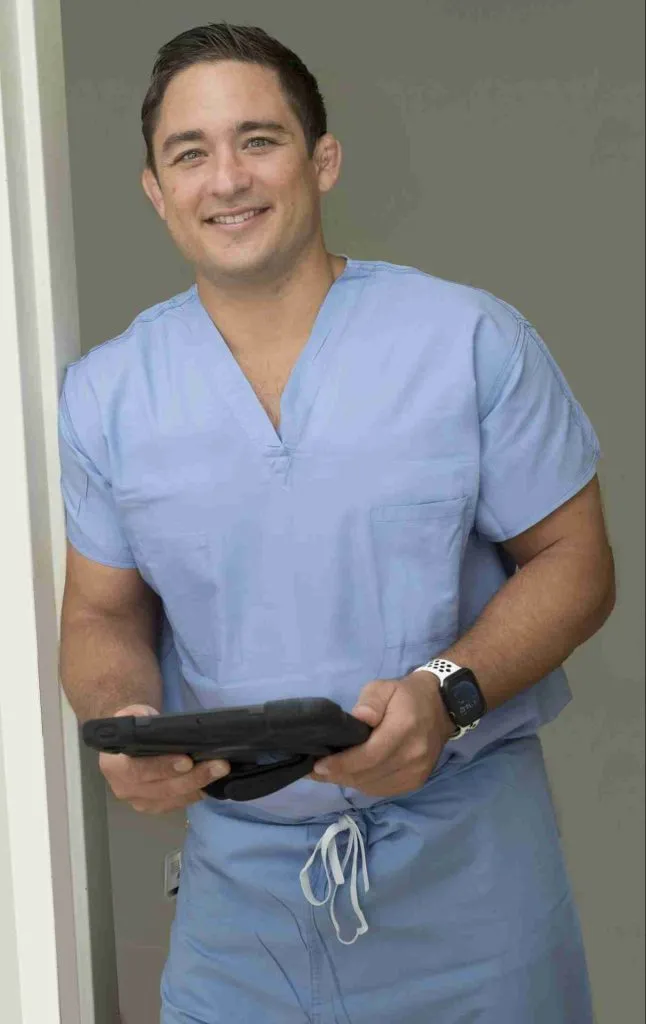Pain Treatment Options
There are many different causes of knee pain, including arthritis, patellofemoral syndrome, ligament injury, meniscus tears, and cartilage injury.
Treatment for arthritis and many other types of knee pain usually begins with non-operative treatments. There is an excellent chance that we can fix or improve your pain without surgery.
You will need to talk with Dr. Morton prior to your appointment about whether you will be a good candidate to safely proceed with these nonoperative treatments.
Non-Steroidal Anti-Inflammatory Drugs (NSAIDs)
NSAIDs are medications that reduce inflammation and pain by blocking an enzyme called cyclooxygenase (COX) in your musculoskeletal system. The COX enzyme uses breakdown products from your cell walls for the production of prostaglandins. Prostaglandins are chemicals that increase pain and inflammation. There are two COX enzymes – COX-1 which is found in your gastrointestinal tract and COX-2 which is found only in your musculoskeletal system. Some medications affect both COX-1 and COX-2, leading to stomach upset, while some medications only affect COX-2 (in the musculoskeletal system). These can be used in the form of pills or creams. The benefit of creams is that they are less likely to affect other areas of your body such as your kidney or heart.

| Medication (Brand Name) | Dosage | Benefits | Prescription | Topical / Oral |
|---|---|---|---|---|
| Ibuprofen (Advil) | 200 – 800 mg once every 8 hours with food | Works Quickly Easy to adjust the dosage Take with Breakfast, Lunch and/or Dinner | No | Oral |
| Naproxen (Alleve, Naprosyn) | 250 – 500 mg twice daily with food | Longer lasting Take with Breakfast and/or Dinner | No | Oral |
| Meloxicam (Mobic) | 7.5 – 15 mg once daily with food | Longer lasting – once daily. Take with breakfast or dinner Less likely to cause abdominal symptoms | Yes | Oral |
| Celecoxib (Celebrex) | 200mg once daily or 100mg twice daily | Longer-lasting – once or twice daily COX-2 selective – less likely to have abdominal effects | Yes | Oral |
| Diclofenac (Voltaren, Pennsaid) | 2 – 4 g twice daily | Less likely to cause systemic side-effects (safer) Medication delivered directly to the affected area | No | Topical |
Side Effects: NSAIDs are generally safe. However, patients with a history of heart disease, kidney disease, high blood pressure, ulcers, or GI bleeding may want to consider avoid NSAIDs as the use of these medications may worsen these problems.
Tylenol (Acetaminophen)
Acetaminophen works via multiple mechanisms and is not completely understood. It works as a partial COX inhibitor without the anti-inflammatory behavior as NSAIDs. Acetaminophen may also affect endocannabinoid receptors. Researchers have not been able to fully elucidate the way that acetaminophen works. We do know that it works more on the central nervous system to limit the experience of pain. It is an inexpensive over-the-counter pain-reliever. Tylenol is generally considered to be a very safe medication. It is however processed by the liver and should be avoided in patients with liver disease.
Corticosteroid Injections (Steroid Injections)
Cortisol is a hormone naturally produced by the body during stress (fight or flight response). This is done to suppress the inflammatory response during stress. Cortisone is a strong anti-inflammatory that works in a similar fashion, suppressing the inflammatory system, and thus naturally producing pain generators. By giving via an injection directly into the knee joint, steroid injections are a great way to reduce pain from a recent arthritis exacerbation or provide temporary relief. Many patients have a lasting effect. Usually, these injections can be provided every 3 months. Many patients will find great success with treatment that occurs on an annual or semi-annual basis.
Weight Loss (Minimizing Obesity)
Decreasing your weight reduces the stress on your joints. Every pound carried on your body is equivalent to 4 pounds on your knees.
Exercise and Physical Therapy
Building muscle is an incredibly effective way to improve the pain in your joints. Working with therapists can help develop muscles involved in hip and knee function. This improvement in strength reduces the stress put across your joint. Stretching helps with making your joints more flexible and less stiff.
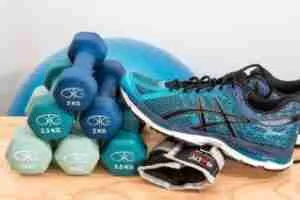
Walkers and Canes
Gait aids provide improved mobility and support for patients that need them.

Activity Modification
High-impact activities such as jogging on joints that are worn out may cause pain and possibly damage to your cartilage. Having reasonable expectations of your arthritic joint may allow you to have a pain-free experience.
Viscosupplementation or Hyaluronic Acid Injections (Gel Shots)
These types of injections may provide cushion or lubrication to the joint.Hyaluronic acid is a substance that is naturally found in the knee and may make it easier for the knee to obtain painless motion. The FDA has approved these medications for knee injections. There have been several medical journal studies that have been published on these types of injections. Some studies have shown improvements in pain for up to 6 months ago at a time, while some have shown no improvements
Anti-Rheumatic Medications
These medications have been game-changers in patients’ lives and pain control. Patients who have gout, rheumatoid, or other inflammatory arthritis should consider evaluation by a rheumatologist for co-management of their pain.
Anti-Gout Medications
The treatment options for gouty arthritis are mainly divided into one of three groups: uric-acid-lowering medication, urate-lowering medications (allopurinol, febuxostat, probenecid), and prophylactic medications. Dietary changes are recommended to patients suffering from gouty arthritis; the intake of food that adds uric acid content in blood needs to be minimized, i.e., red meat, liver, kidneys, sugary drinks, and foods rich in fructose.
Radiofrequency Ablation
Radiofrequency ablation is a technique by which a probe is inserted near a nerve and delivers radiofrequency energy, causing ionic heat to create a lesion into the nerve. By creating a lesion in the nerve, it prevents the transfer of pain signals from your arthritic knee. This prevents you from feeling the pain. Radiofrequency ablation requires anesthesia for the insertion of the probe. Some patients notice pain relief for up to two years.
TENS Unit
TENS units (Transcutaneous Electrical Nerve Stimulation) are often provided in physical therapist office to help with stimulation of muscle for muscle building and pain relief. Some patients have noticed that purchasing a portable take-home unit provides them with pain relief without the use of medications or procedures. TENS unit delivers electricity to electrode pads that are applied to the skin. This electrical stimulation will cause muscle contractions. Some patients notice an improvement in their overall pain control through this process.
Alternative Medical Treatments

